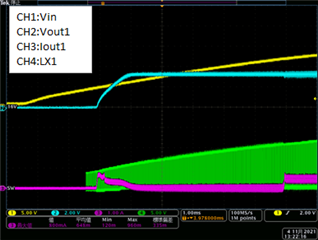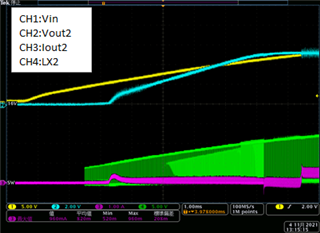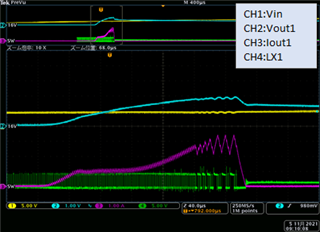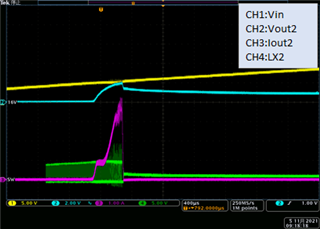Datasheet P16 is described "fzff is smaller than soft start equivalent frequency (1 / Tss)".
When fzff is much higher than 1/Tss, is these condition possibility to occur high inrush current on startup?

I think that high fzff occur below Vout "jump", and occur unexpected high current.
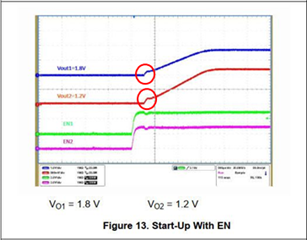
【Background】
On the evaluating based on EVM and changed Vout1:3.3V/2A (tss: 624μs), Vout2: 5A/3A (tss: 1890μs), 500kHz, and 10μH.
The other difference is Cff: 22pF (smaller than default value).
When Cout set 100μF, both Vout1 and Vout2 occur high current startup and overcurrent protection. (Cout: 22μF is normal operation)
I hope to confirm large Cff value (ex. 2.2nF) have good effect on suppress large current or not.
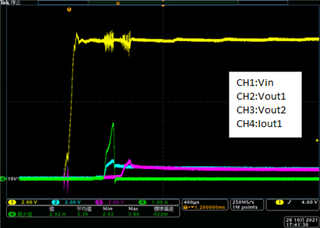
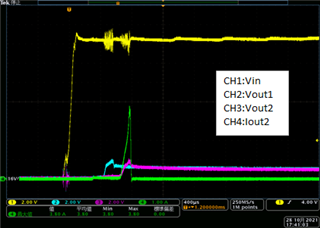
Best regards,
Satoshi


